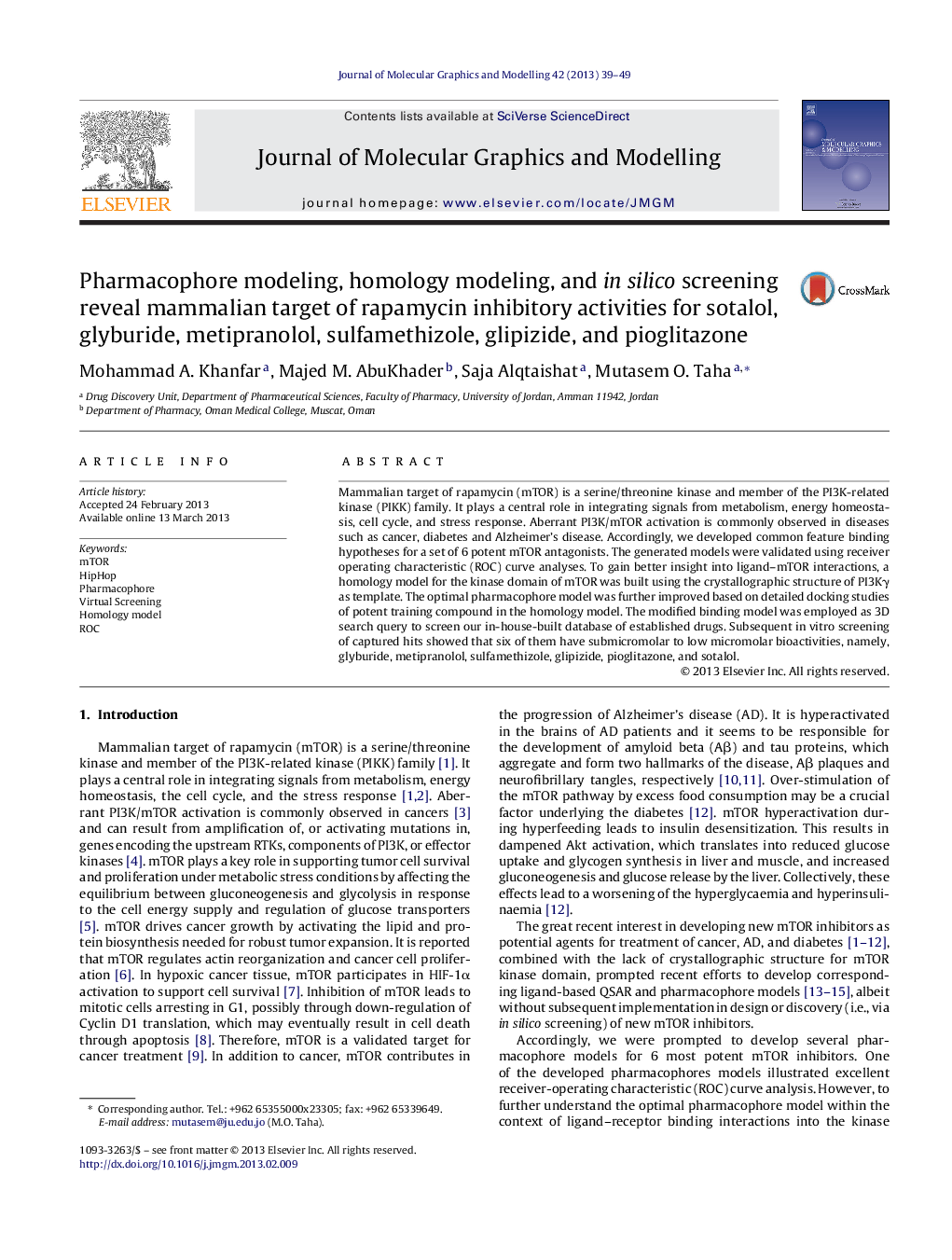| Article ID | Journal | Published Year | Pages | File Type |
|---|---|---|---|---|
| 444285 | Journal of Molecular Graphics and Modelling | 2013 | 11 Pages |
Mammalian target of rapamycin (mTOR) is a serine/threonine kinase and member of the PI3K-related kinase (PIKK) family. It plays a central role in integrating signals from metabolism, energy homeostasis, cell cycle, and stress response. Aberrant PI3K/mTOR activation is commonly observed in diseases such as cancer, diabetes and Alzheimer's disease. Accordingly, we developed common feature binding hypotheses for a set of 6 potent mTOR antagonists. The generated models were validated using receiver operating characteristic (ROC) curve analyses. To gain better insight into ligand–mTOR interactions, a homology model for the kinase domain of mTOR was built using the crystallographic structure of PI3Kγ as template. The optimal pharmacophore model was further improved based on detailed docking studies of potent training compound in the homology model. The modified binding model was employed as 3D search query to screen our in-house-built database of established drugs. Subsequent in vitro screening of captured hits showed that six of them have submicromolar to low micromolar bioactivities, namely, glyburide, metipranolol, sulfamethizole, glipizide, pioglitazone, and sotalol.
Graphical abstractFigure optionsDownload full-size imageDownload high-quality image (362 K)Download as PowerPoint slideHighlights► Common feature pharmacophore refined by homology modeling was developed for mTOR inhibitors. ► Resulting pharmacophore was used as search query to capture drug hits. ► Captured hits were bioassayed in vitro. ► Six nanomolar and low micromolar drug hits were discovered.
